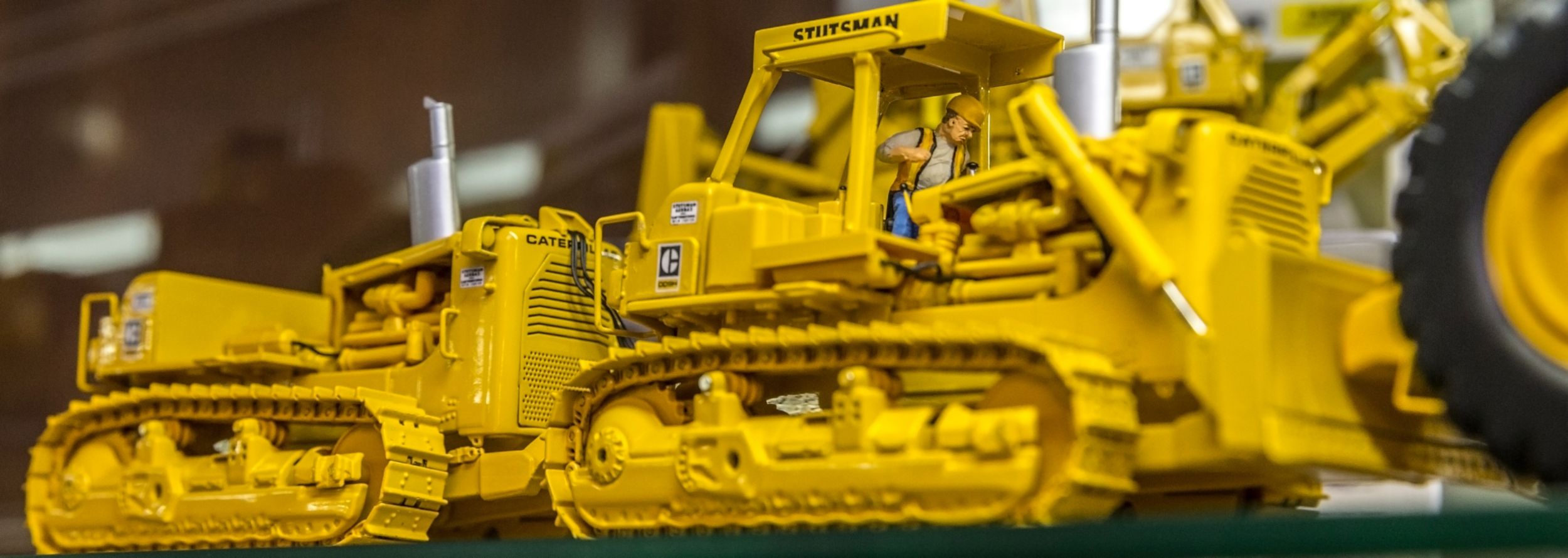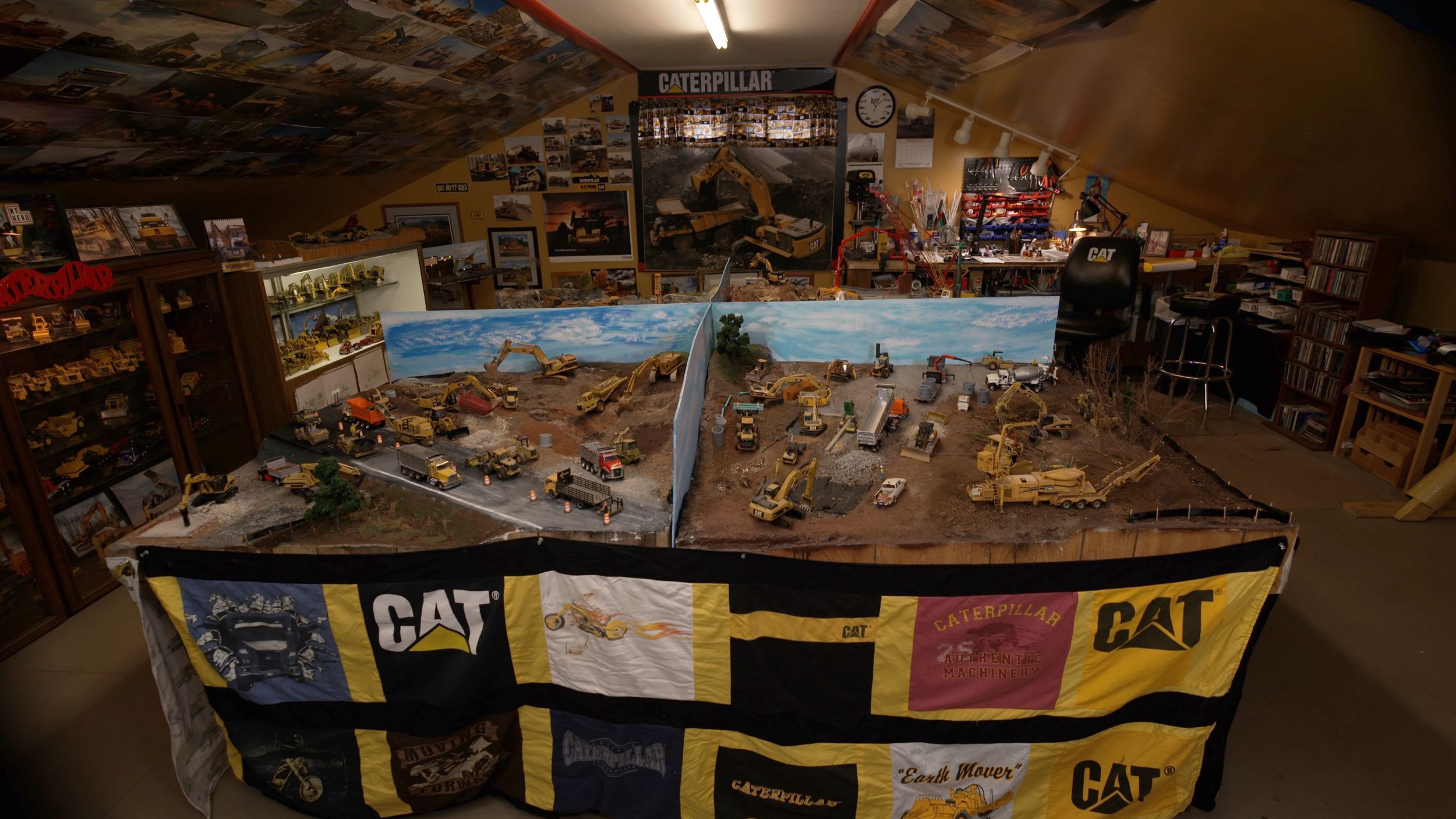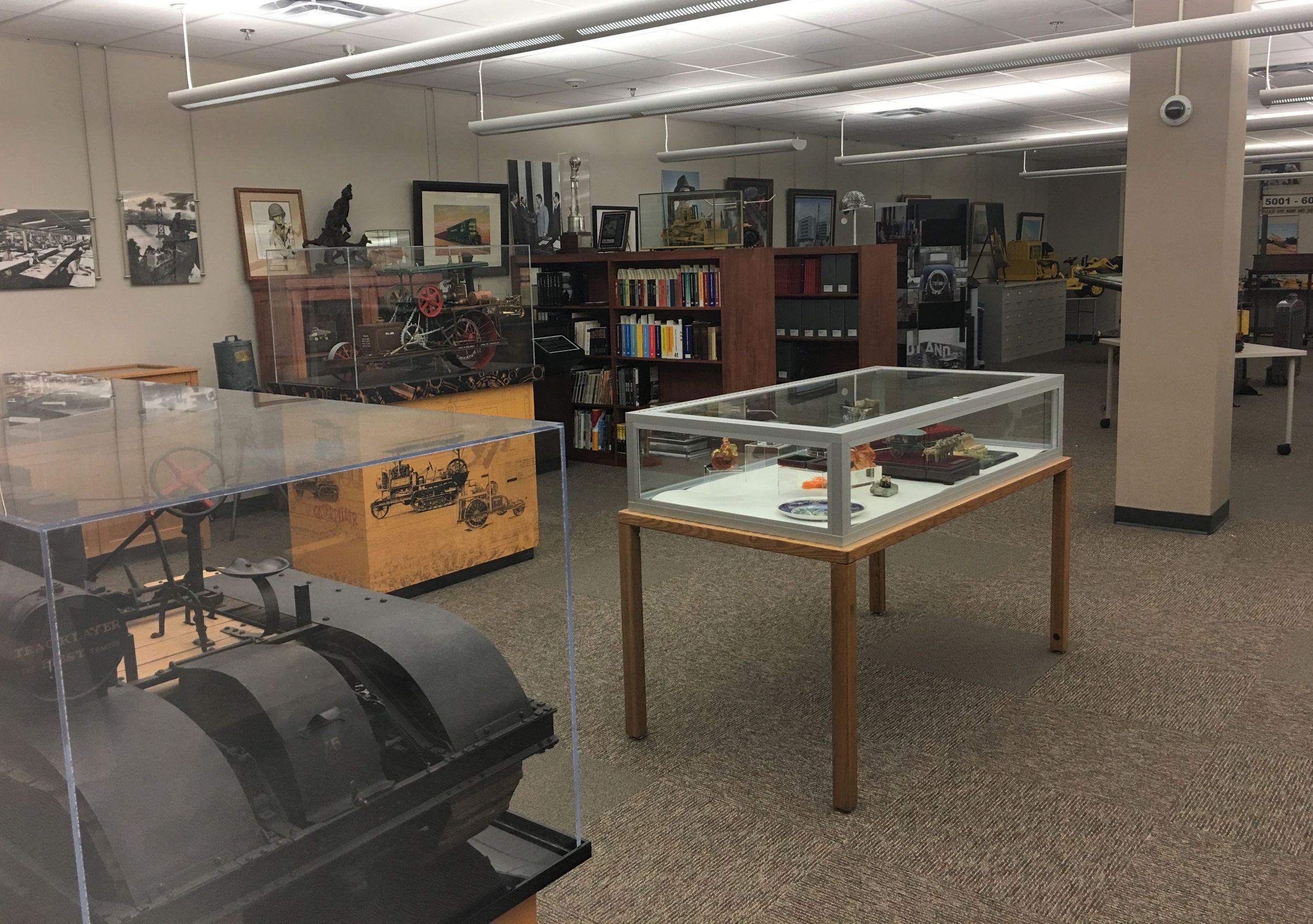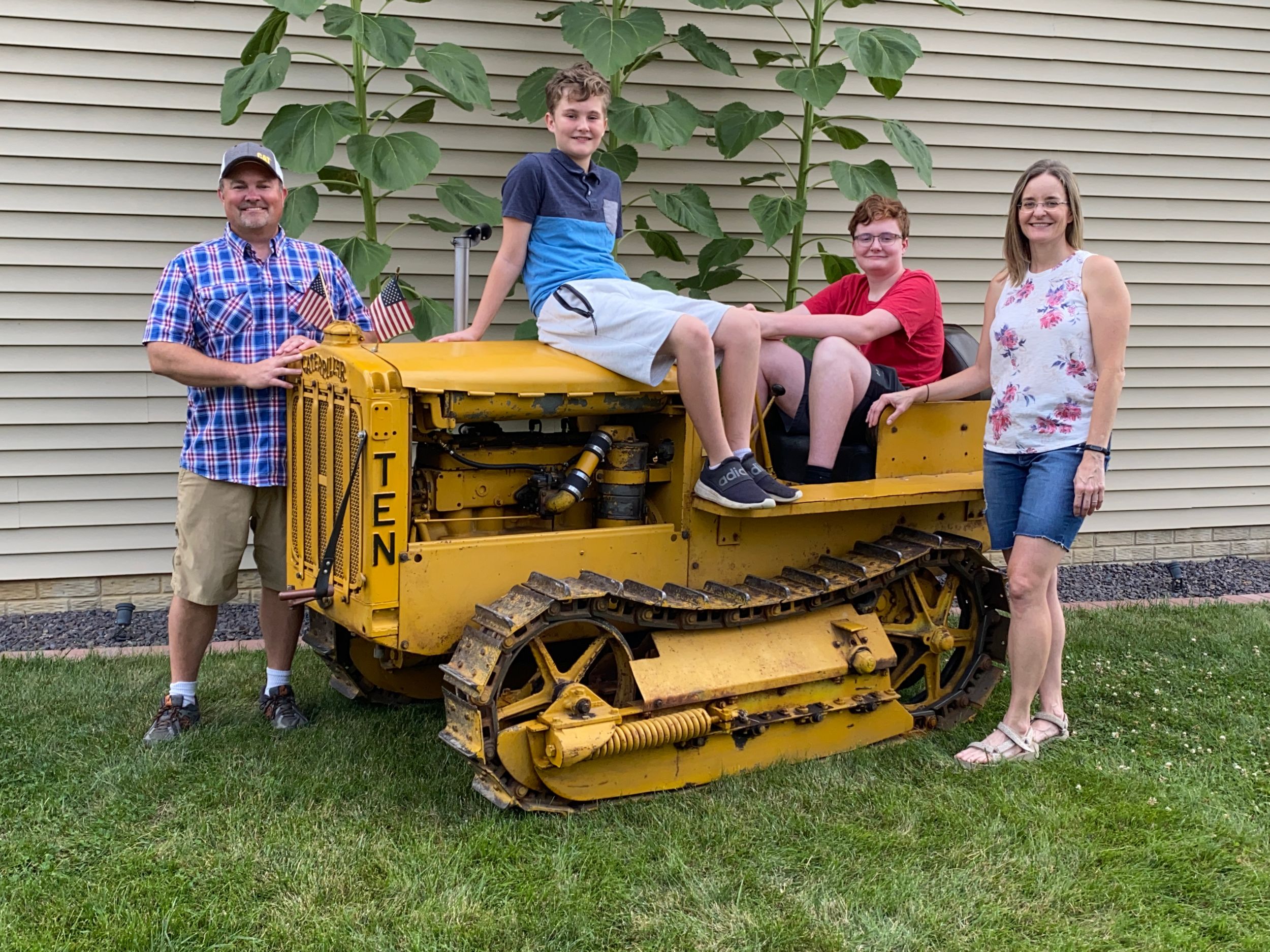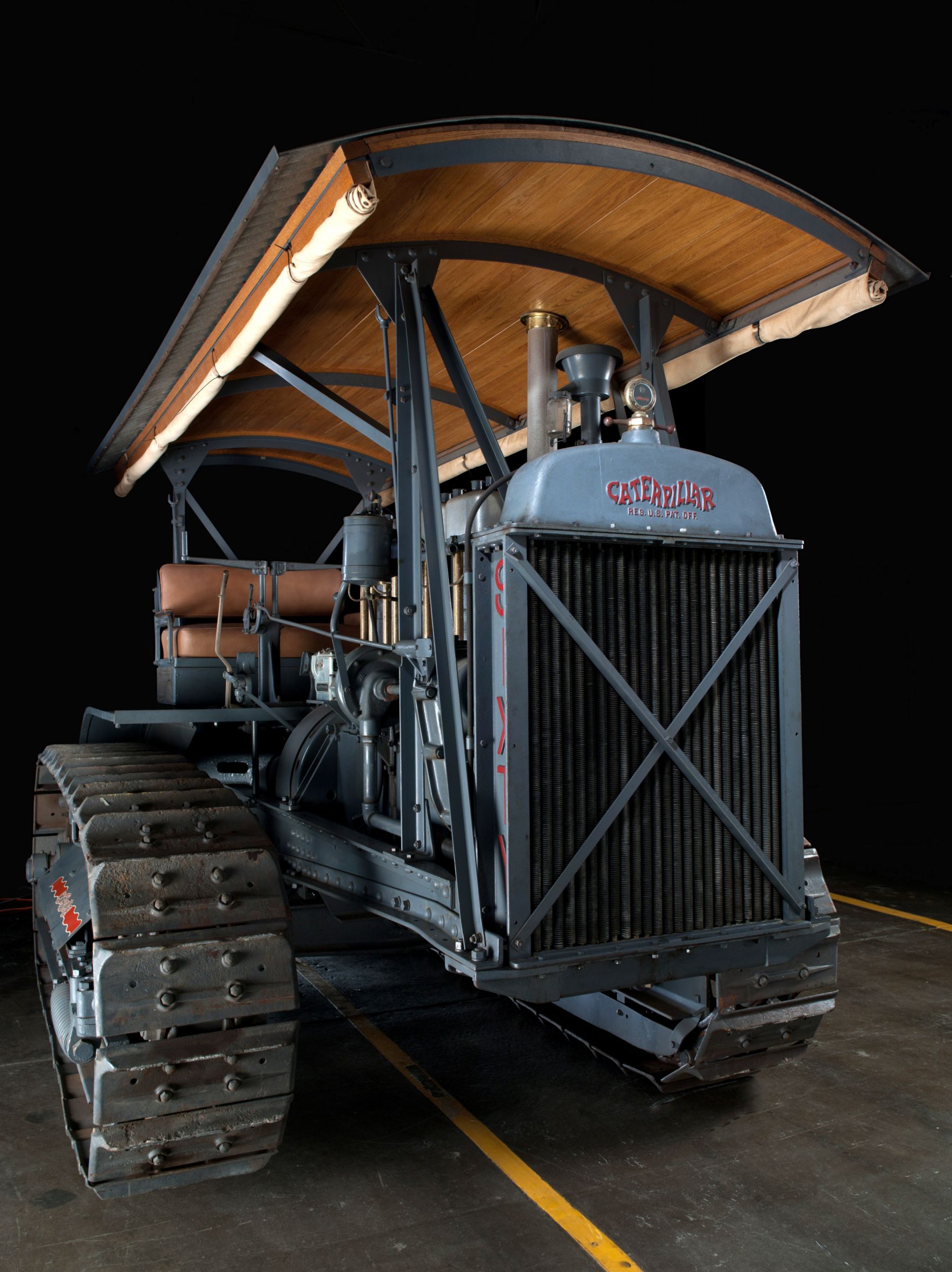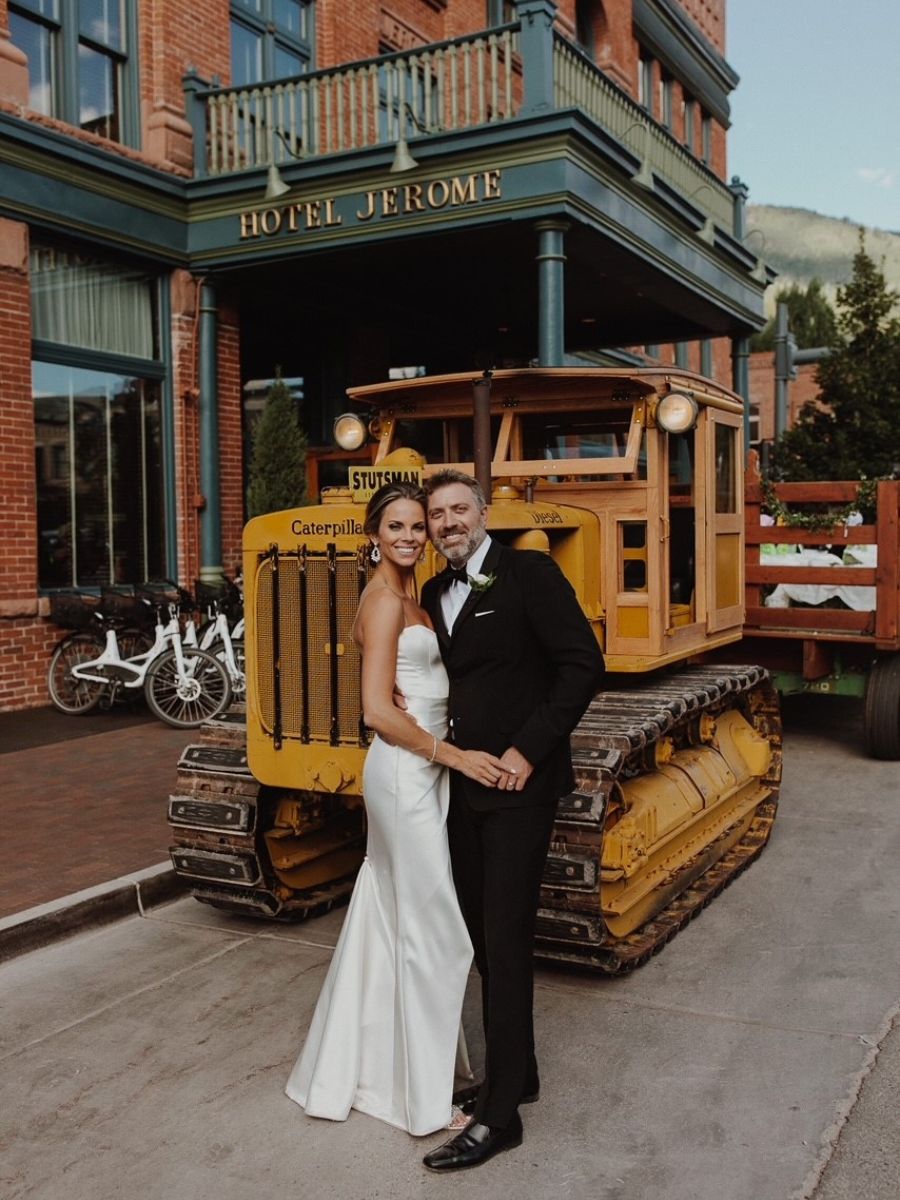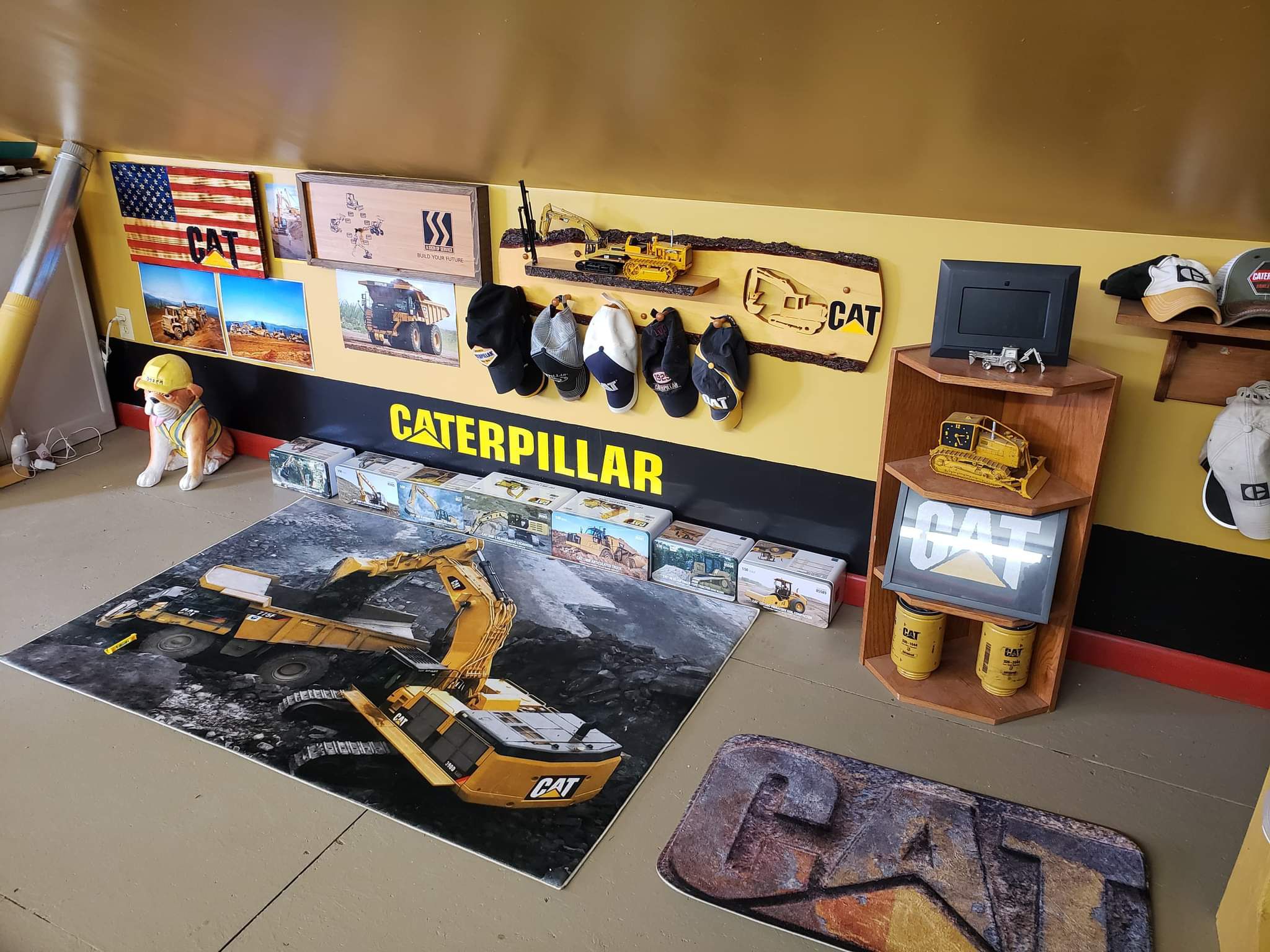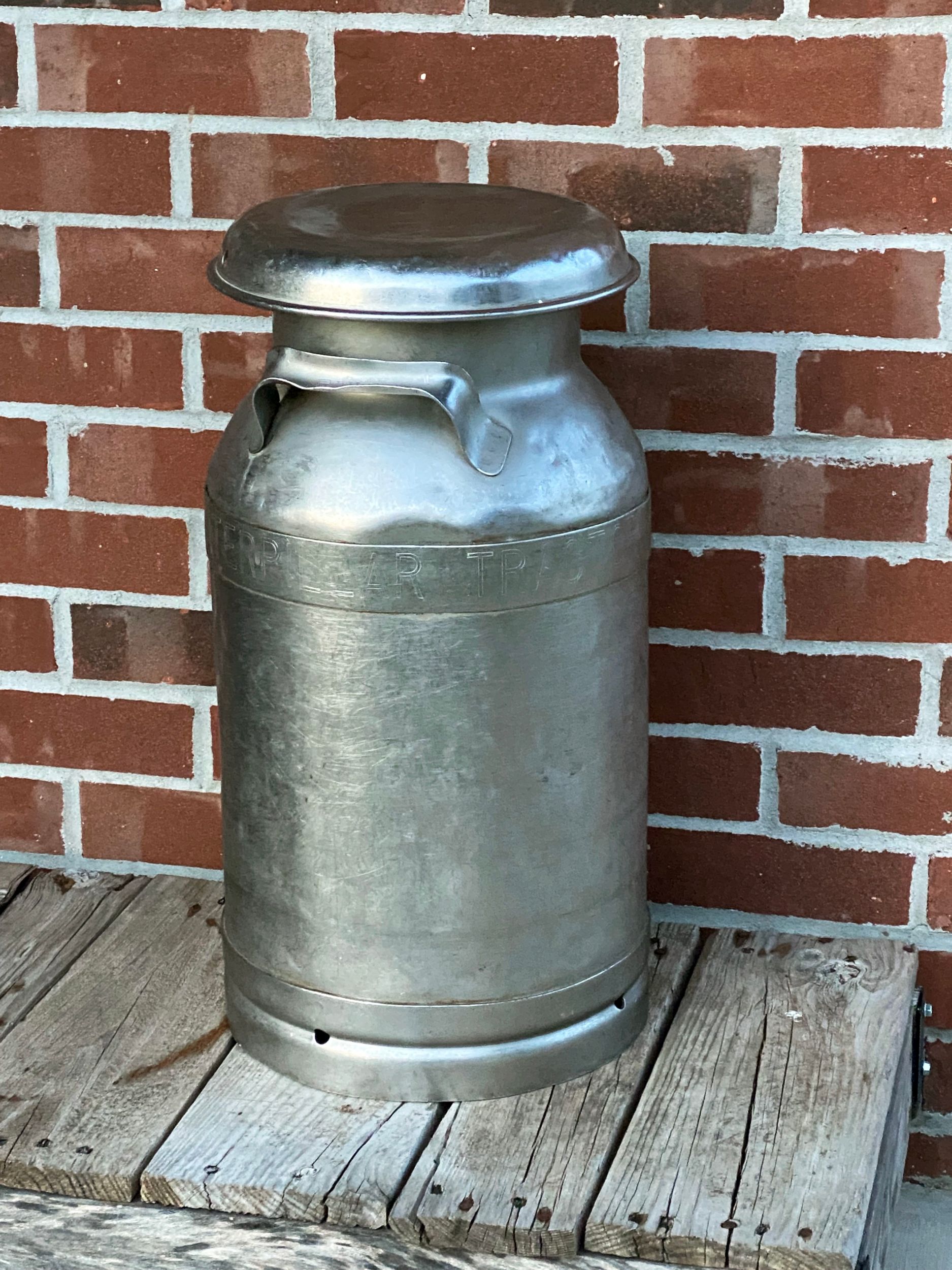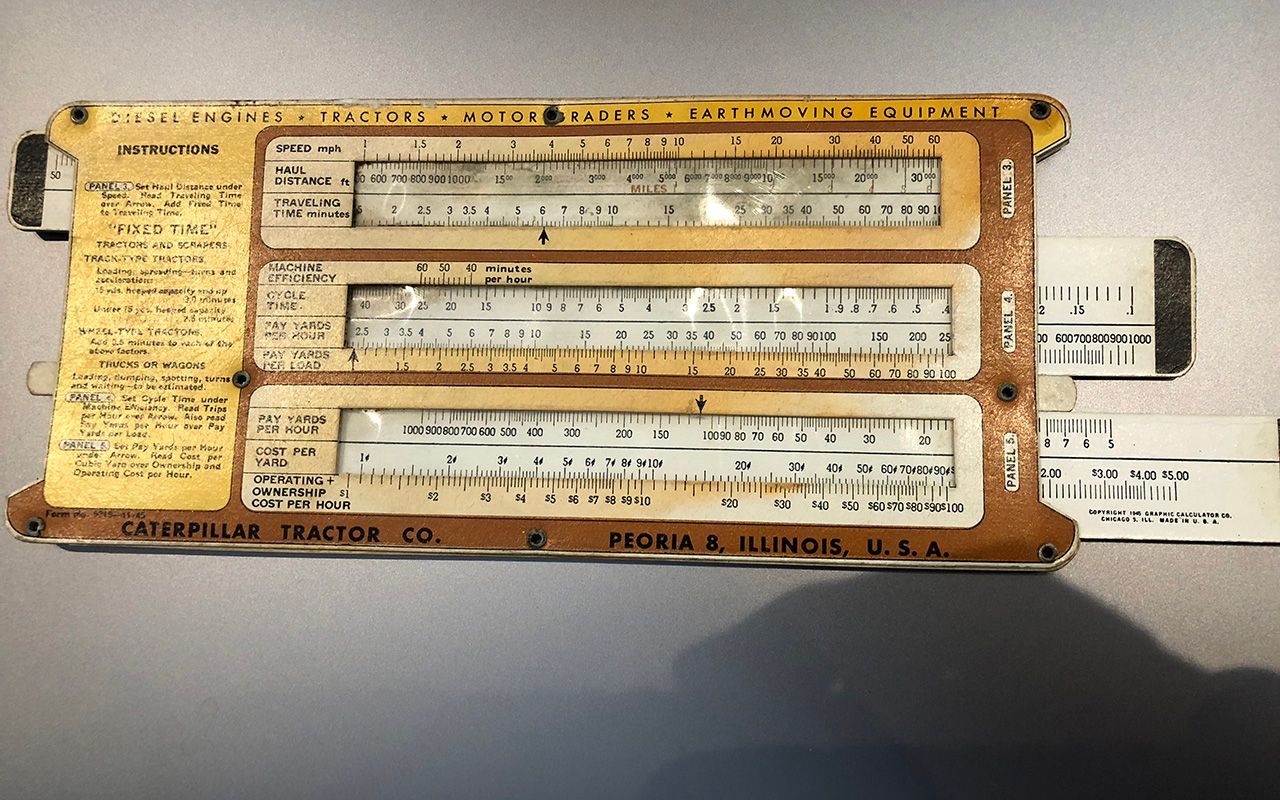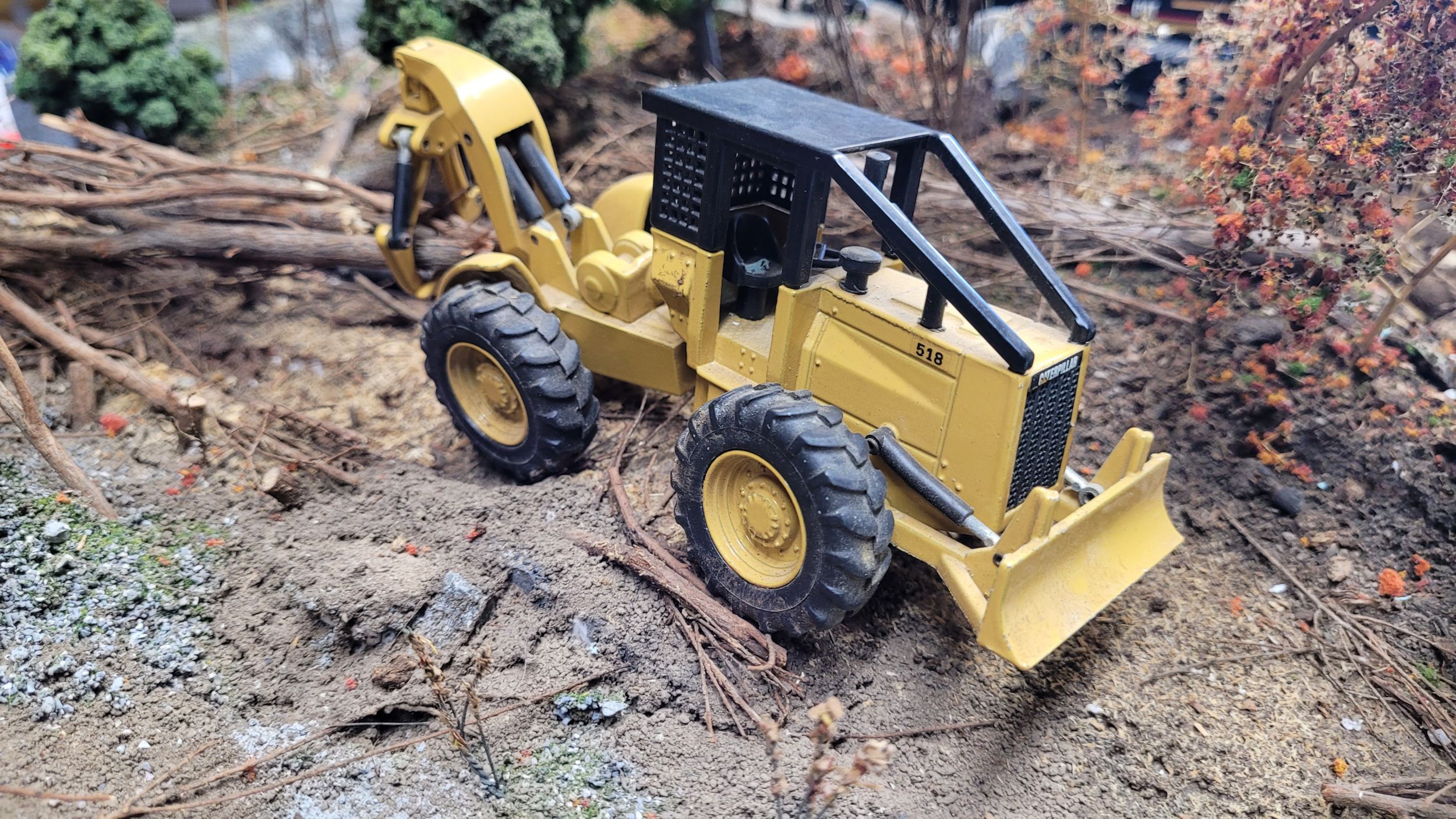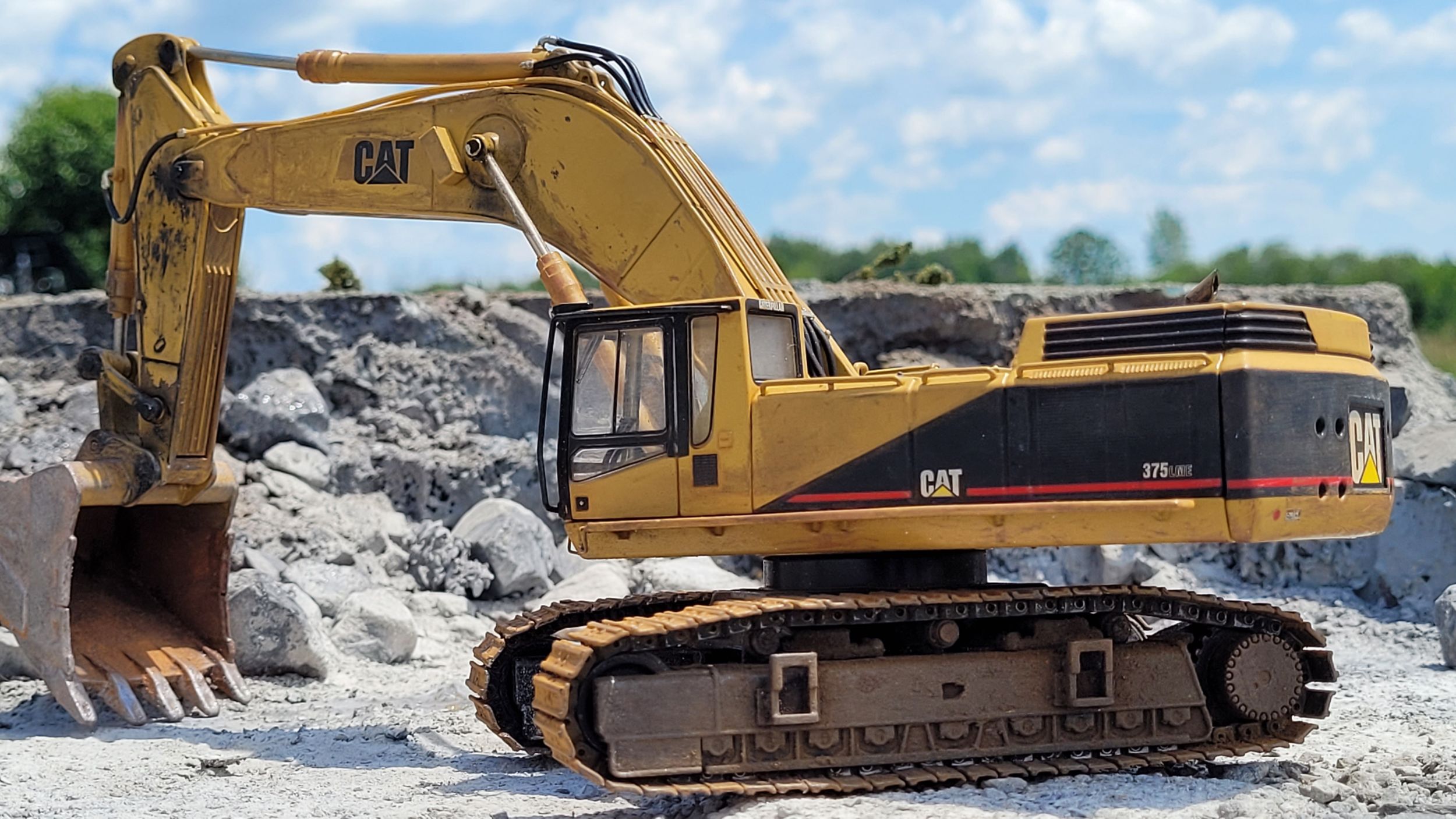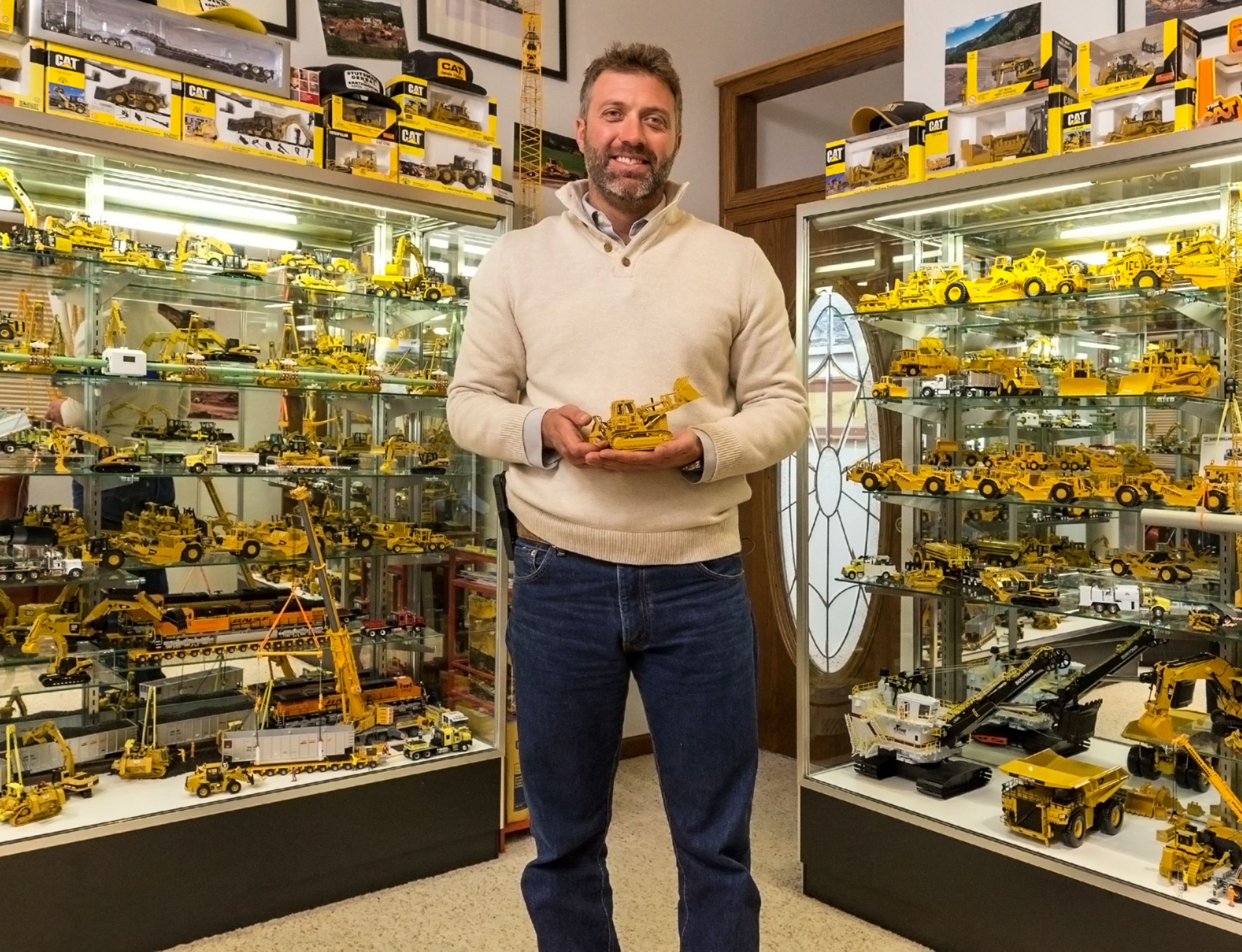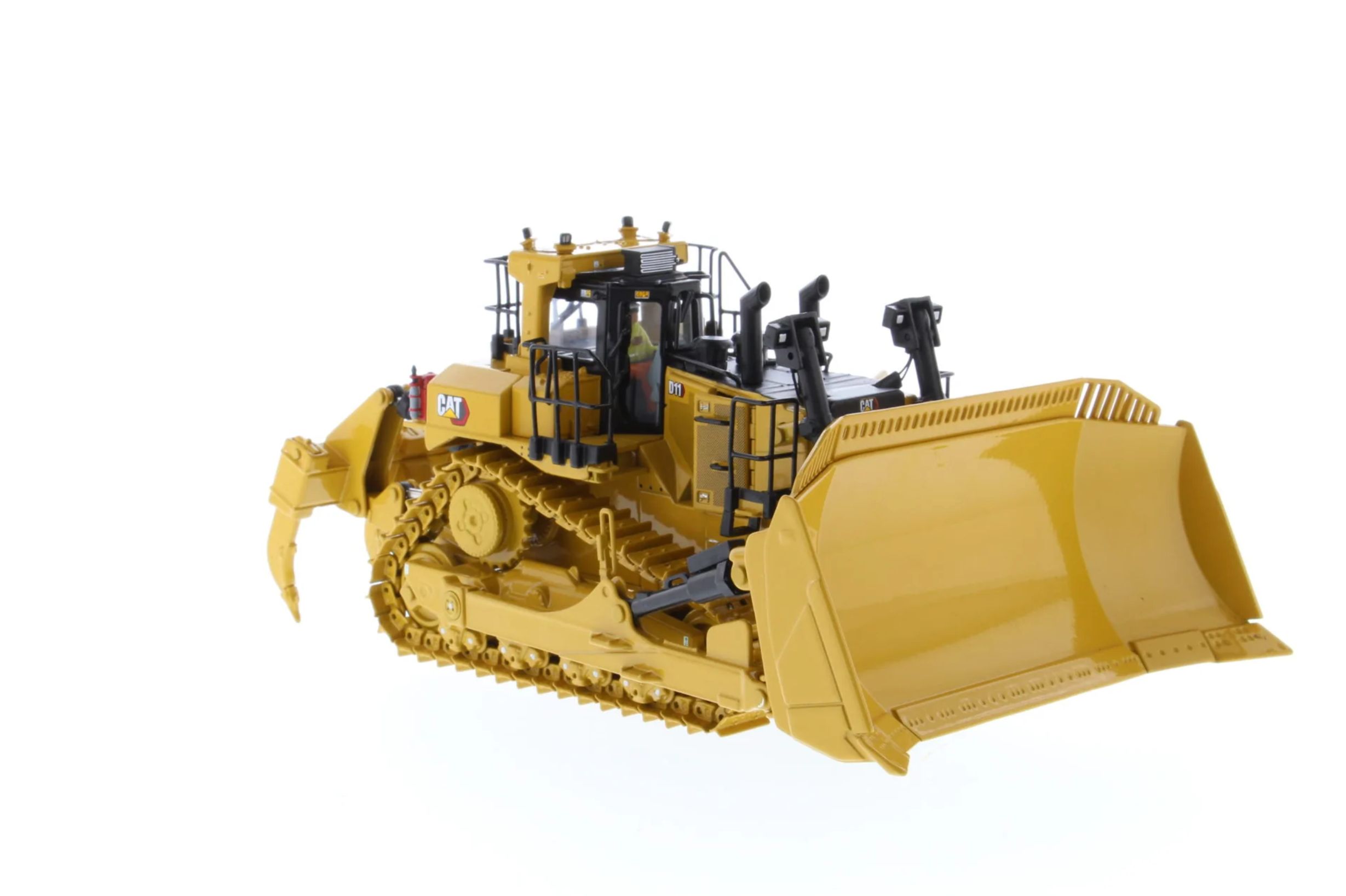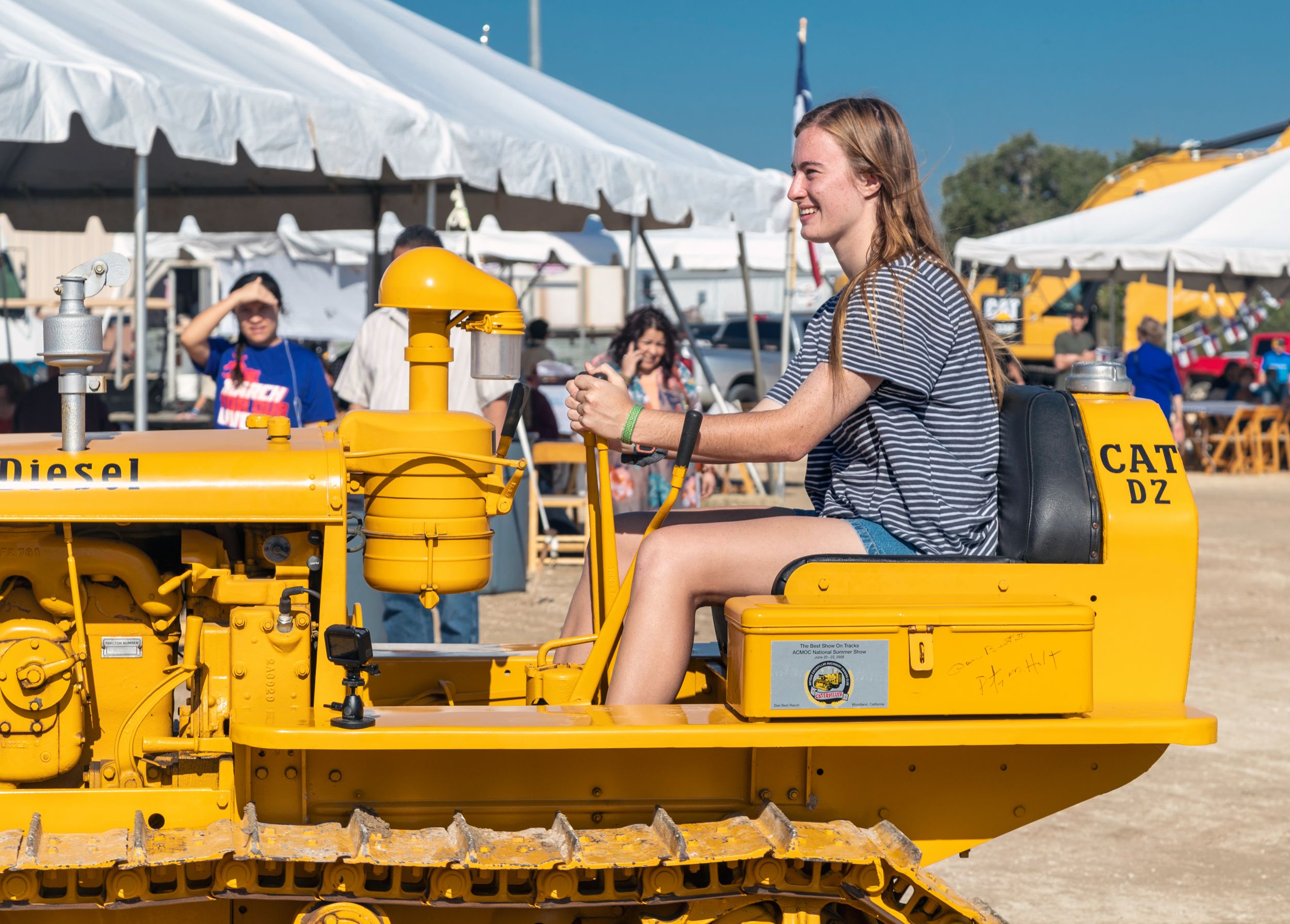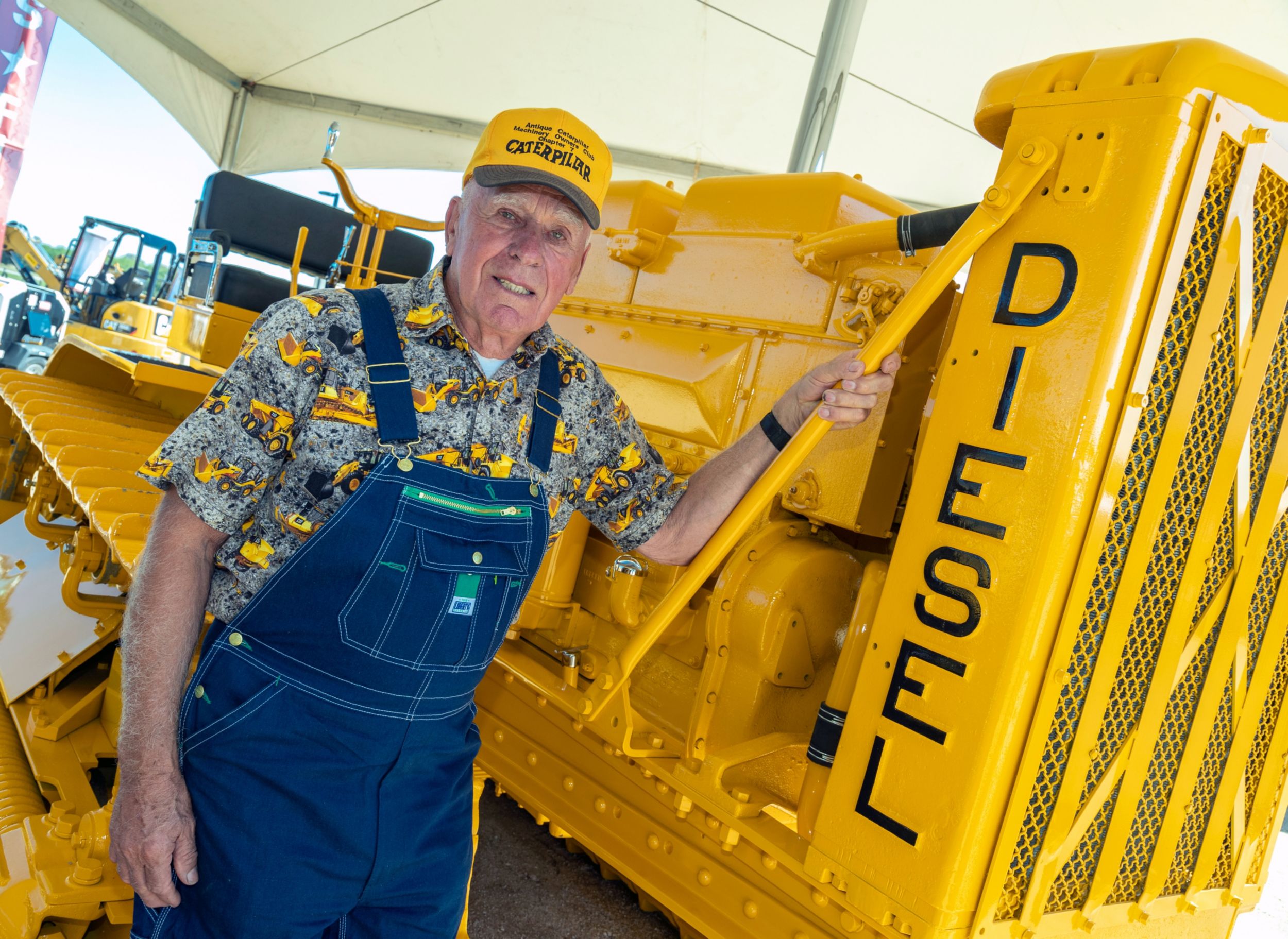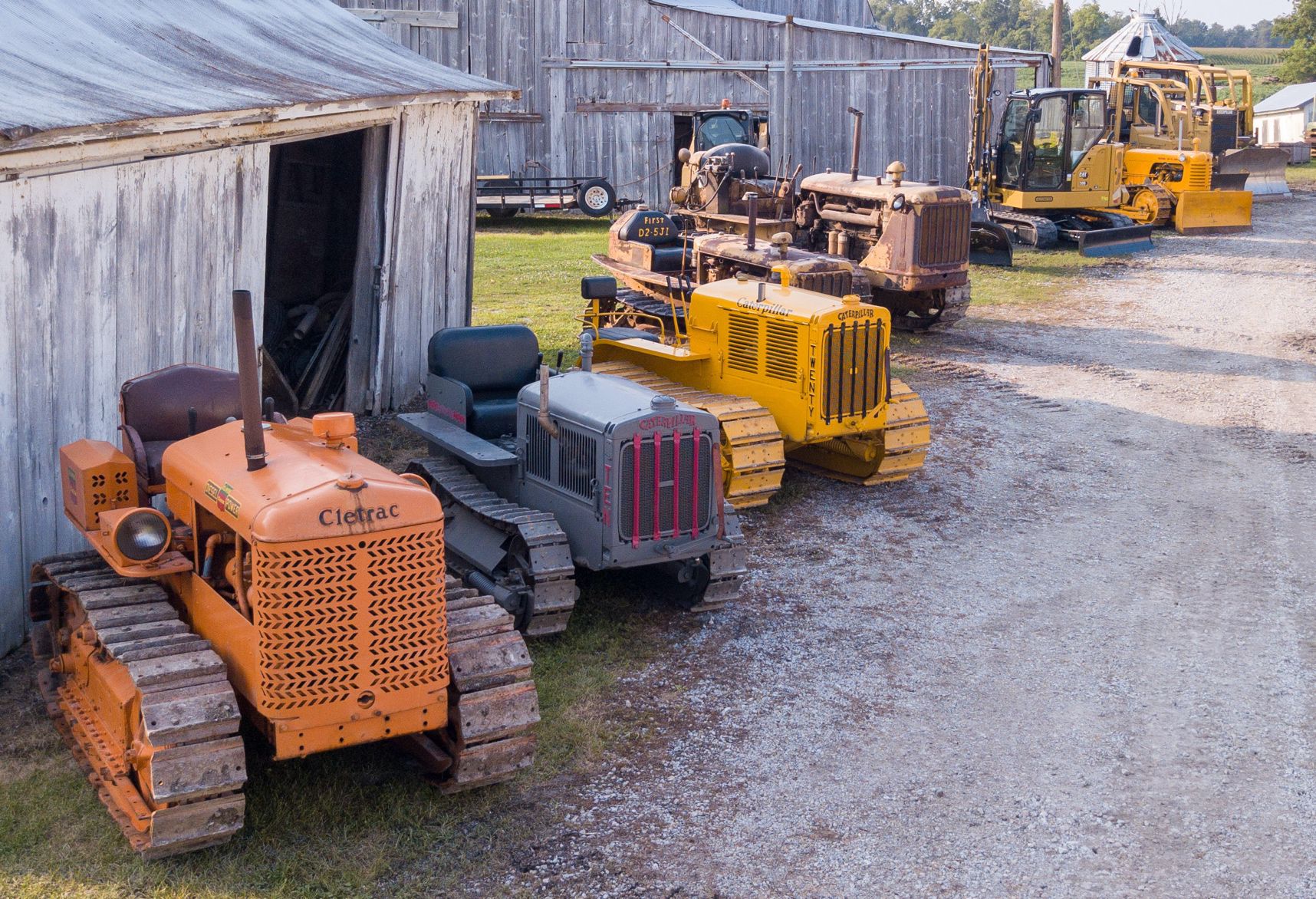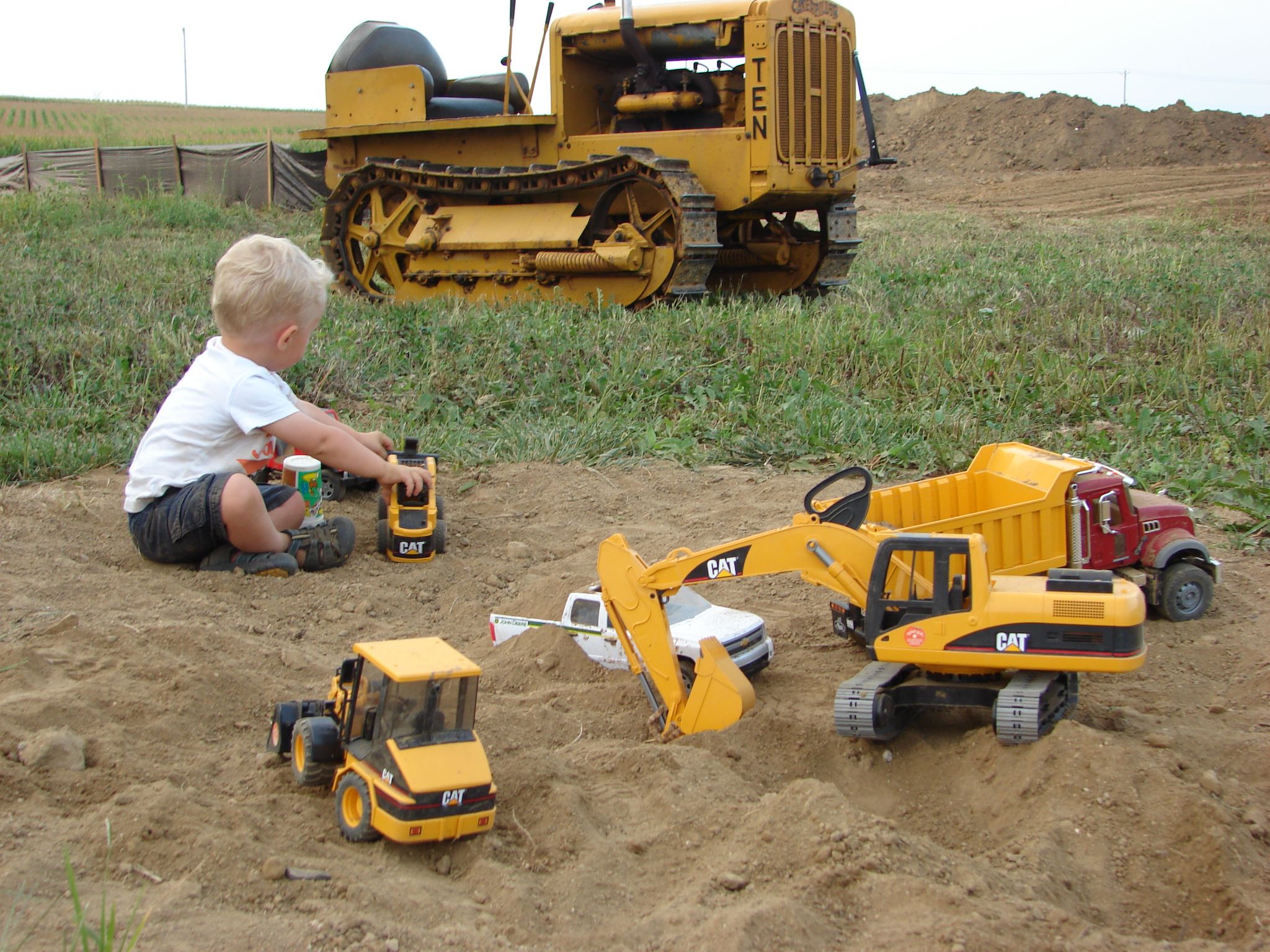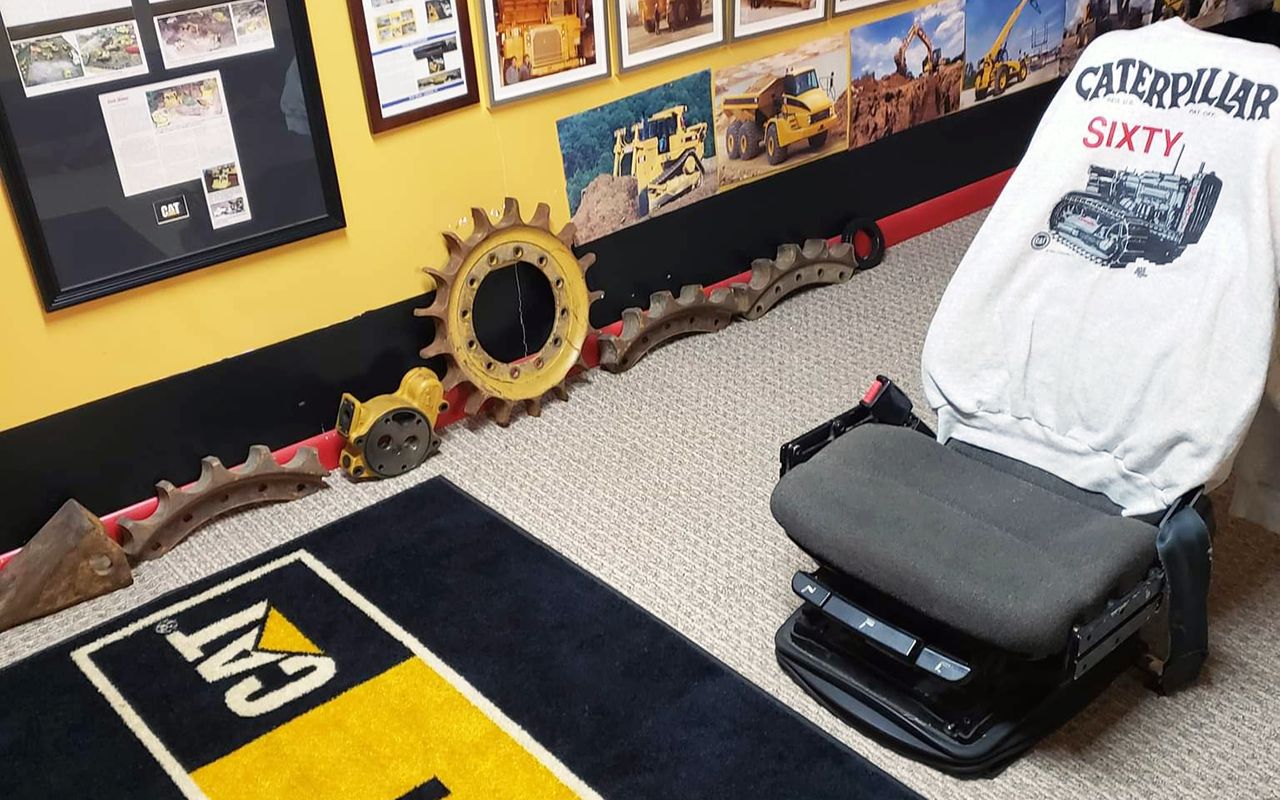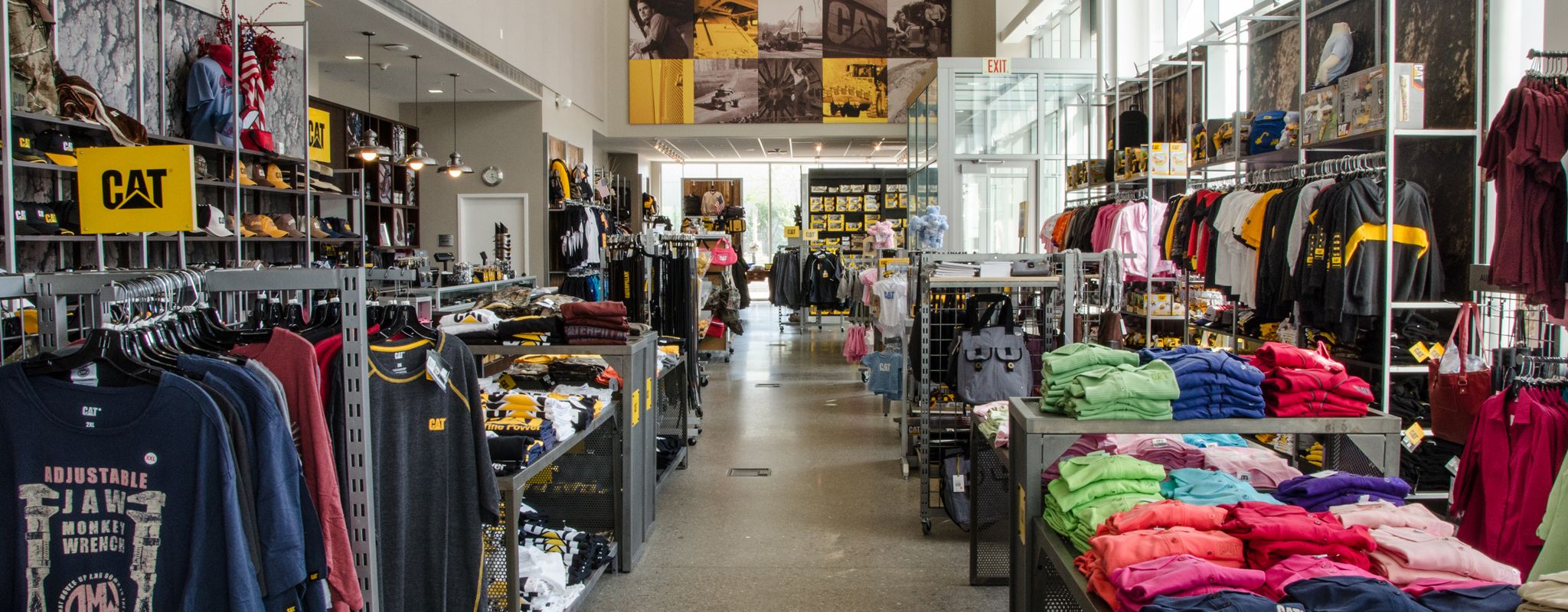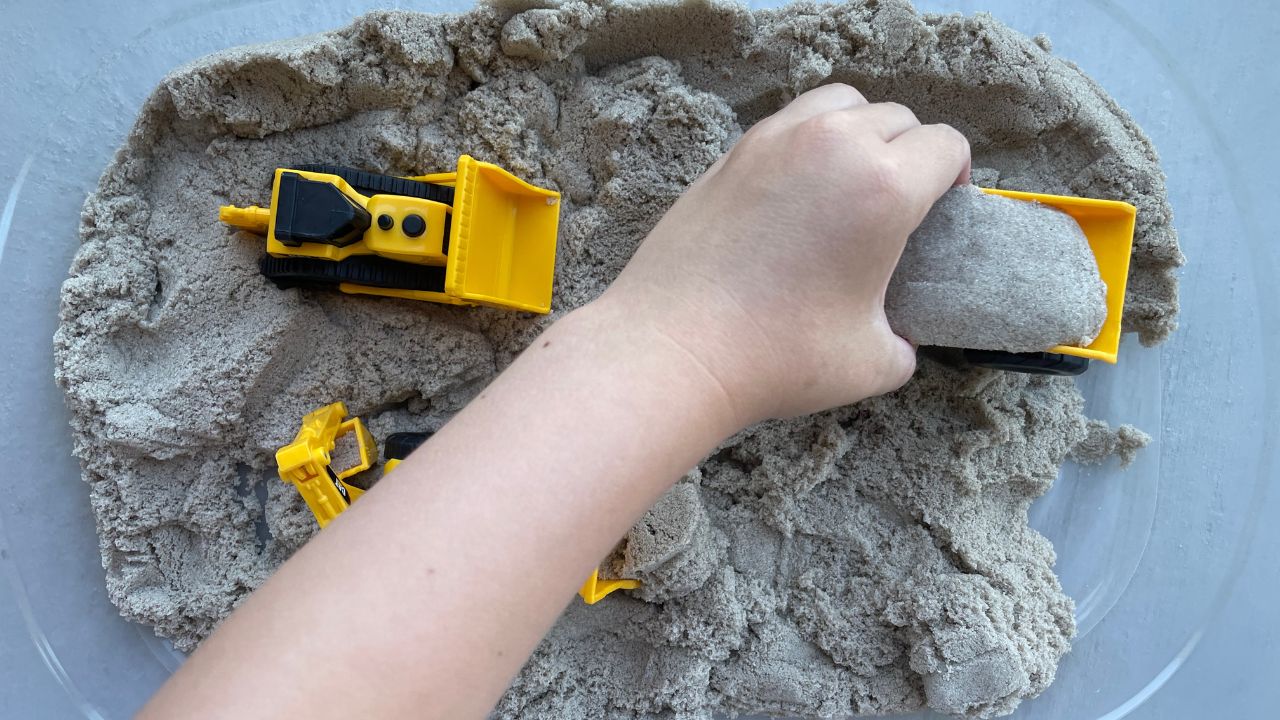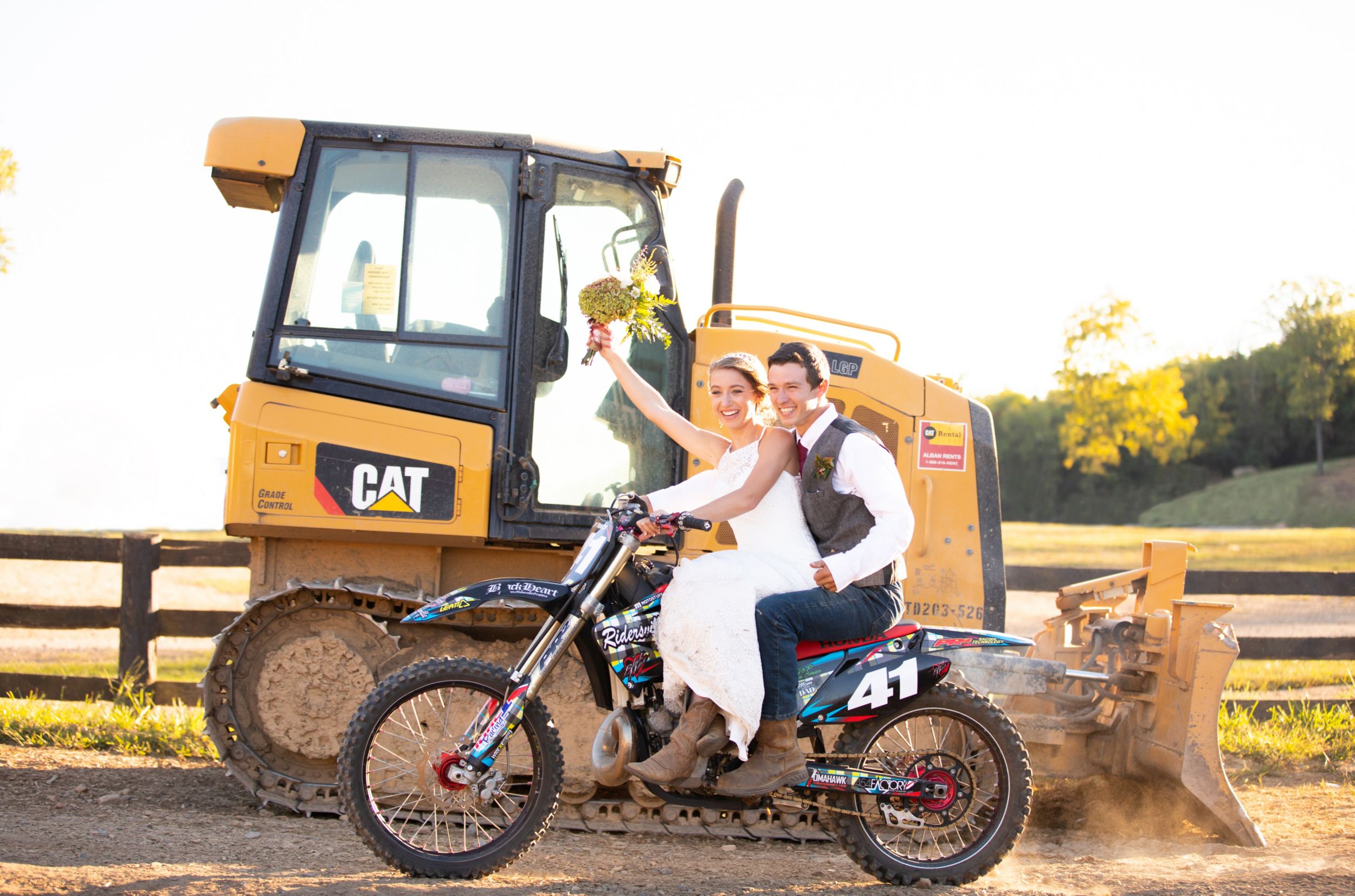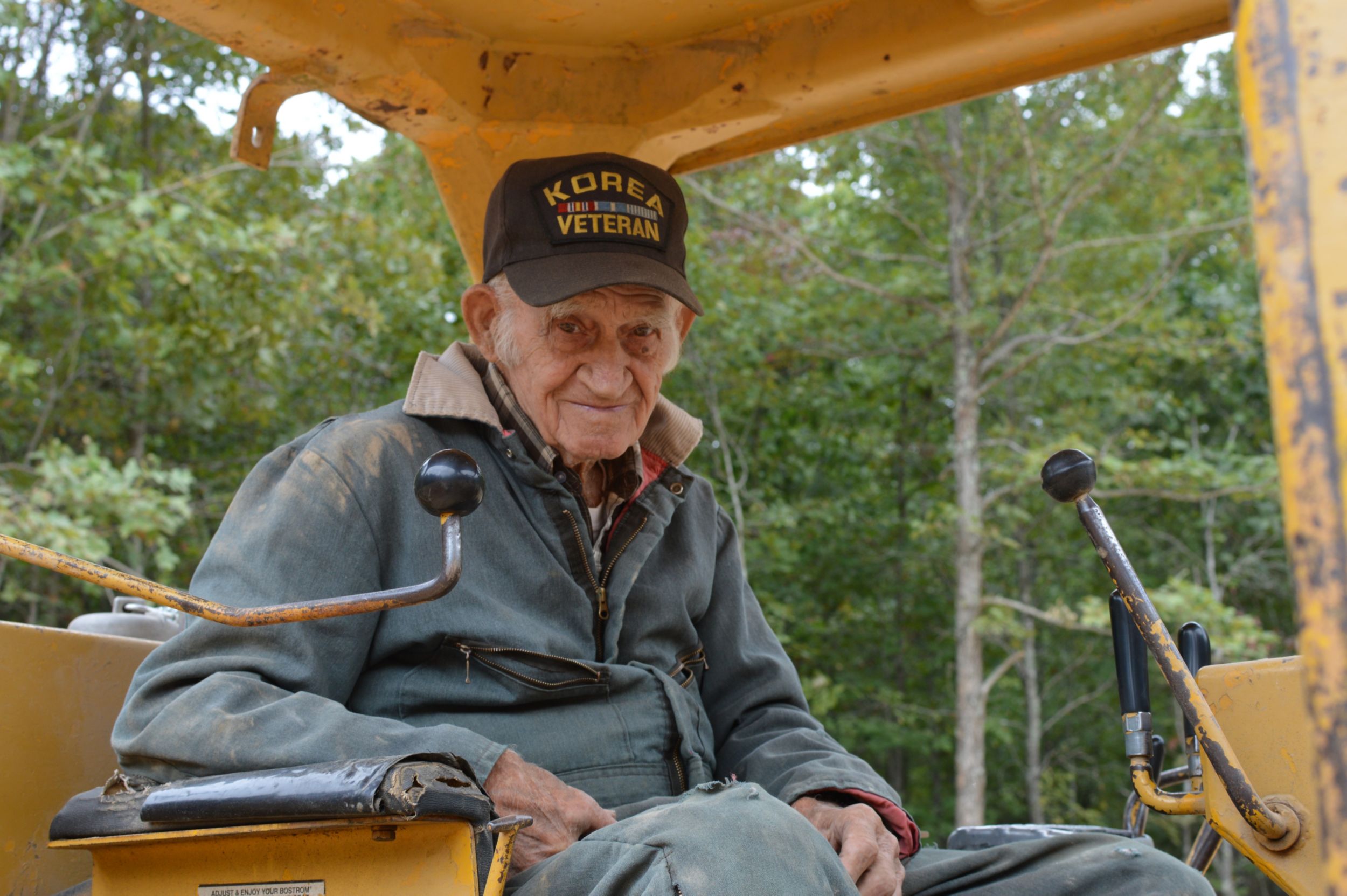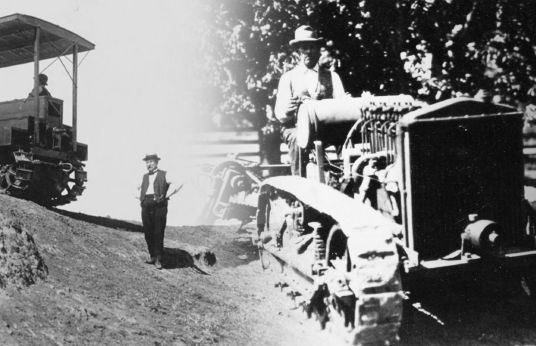

Sign In
Welcome! Sign In to personalize your Cat.com experience
If you already have an existing account with another Cat App, you can use the same account to sign in here
Register Now
One Account. All of Cat.
Your Caterpillar account is the single account you use to log in to select services and applications we offer. Shop for parts and machines online, manage your fleet, go mobile, and more.
Account Information
Site Settings
Security
The World of Caterpillar Collectibles: An Insider’s Look
Die-hard fans are bringing Caterpillar history to life in amazing collections. Read our Q&A with six Caterpillar collectors to learn how you can, too.
By Mario Passera, Contributor | Posted September 26, 2022
The tornado came through town like a freight train. Afterward, Dave Tallon and his family assessed the damage. The power was out, their driveway was blocked by a fallen tree — and in every direction, the tornado had left a hazardous debris field. They needed to evacuate, but how?
Enter Dave’s antique Caterpillar machinery. Out to the garage he went to fire up his 1929 Caterpillar 10 tractor. Time to roll.
His family grabbed some necessities and piled onto the old tractor, a piece of Caterpillar history that Dave had carefully maintained. After using the hand levers to carefully maneuver the collectible machine out of the garage, he and his family went for the ride of their life, rolling safely over broken glass, jagged pieces of plywood, and other pieces of lumber with nails still sticking out of them.
Collecting antique Caterpillar machinery might not always feel like a scene out of the movie “Twister,” but maybe that’s a good thing! For passionate Caterpillar collectors across the globe, the thrill is in celebrating the history of the brand — and sharing it with others.
Bringing Caterpillar History to Life
Ask a Caterpillar collector, and they’ll tell you that one of the main things that sets Caterpillar apart from other companies is its storied history. For them, this history — and the modern brand it has created — resonates with them for reasons that are powerful enough to fuel a lifetime of collecting.
But who are these collectors, and what is it about Caterpillar that inspires their collections (and sometimes inspires them to take up entire rooms, basements… and barns)?
Kevin Skinner
Heavy Equipment Operator
Who are Caterpillar collectors — and what makes them tick?
Men and women from all backgrounds across the globe share an enthusiasm for the Cat® brand. Those who become Caterpillar collectors typically have a passion for a combination of the following:
- History
- The simplicity of antique machines
- The thrill of the hunt
Some are owner-operators, some are from farming families, some are everyday employees. Some just appreciate the visual allure of the Cat logo and colors.
Within the community of Caterpillar collectors, passion for the brand comes out in different ways. Collections include anything from diecast models to vintage memorabilia — and 90-year-old tractors weighing thousands of pounds.
Caterpillar Collectors Q&A
Dave Tallon is one of many mega Cat fans out there across the globe. We had a chance to interview him and a few others to find out what makes them tick and what surprising items are in their collection.
We also got their tips on how you can start collecting (or level up your current collection) if you’re as passionate about Caterpillar history as they are.
All-star roll call:
DAVE TALLON
- Role: Caterpillar Product Specialist at the Caterpillar Proving Grounds; President of the Antique Caterpillar Machinery Owners Club (ACMOC) Central Illinois Chapter
- Specialty: Tractors
- Quote: “I like to go to tractor shows and talk with others about tractors, and when I come to work, I get to talk with dealers and customers about tractors.”
SAM MEEKER
- Role: Caterpillar Product Application Specialist
- Specialty: Dozers and track loaders
- Quote: “I try to be an oak tree of knowledge for products, applications, technology — someone our customers can confidently lean on.”
KEVIN SKINNER
- Role: Heavy Equipment Operator and Caterpillar diorama artist extraordinaire
- Specialty: Cat 990 and 980 wheel loaders, Cat 775 rock trucks
- Quote: “My wife always says I’m running out of room for my collection, and I say I’ll find more.”
LEE FOSBURGH
- Role: Caterpillar’s in-house collector (Manager of Caterpillar’s Heritage Services & Archives)
- Specialty: All things Caterpillar history
- Quote: “The research we do at our archives provide extra value back to our passionate employees and customers across the globe.”
GARY AFFOLTER
- Role: Gary Affolter, Program Manager at Diecast Masters Company—diecast scale models
- Quote: "I love working closely with engineers and product managers across all Caterpillar product lines to ensure the accuracy of the new scale models we release.”
SHAY STUTSMAN
- Role: President, Stutsman Gerbaz, Inc.
- Specialty: Leading a 62-year-old family earth-moving business into the future
- Quote: “Collecting is an outlet. You forget the day to day and just enjoy what’s great about the business.”
Let’s hop into a vintage Cat excavator and dig into the world of these mega collectors!
Q: How big is your collection?
Dave: I’ve got more Cat scale equipment models than I have room to display. That even includes prototypes of models that I get sent for review. Throw in all the Caterpillar literature and memorabilia I’ve got, too, and well, let’s just say, I might need a bigger house someday.
Kevin: I’ve got over 300 scale models in a 900-square foot room above my garage, in my Cat Room. Some of them are displayed on the dioramas I built: four large ones (each about four feet by four feet) and three smaller ones. A six-footer is on the way.
Editor’s Note: His dioramas are extremely skilled — we’re talking Hollywood effects level detail! Watch our video to see how he does it. You can also follow Kevin on Facebook and Instagram.

Sam: We’ve got 15 to 20 older Cat machines. Maybe six newer ones, like skid steers that my family uses for some side work. I’ve also got 200 to 300 branded toys and enough vintage Caterpillar literature to keep us warm for the rest of our lives — I’m talking hundreds of pages.
Shay: I’ve got over 400 Caterpillar scale models. Last year it was getting a little snug in the room I had my collection displayed in, and more importantly, we needed that room for our first child. So, we moved the collection downstairs where it will continue to grow. Now the old collection room is a nursery… and one of the first things we did when our son was born was put him in a Cat onesie.
Lee: Well, it’s technically Caterpillar’s collection, but I manage:
- 1 million historical images
- Over 1,000 artifacts
- A fleet of 25 antique Caterpillar machines
- 300 pieces of art
- Over 100,000 digital assets
- A Cat toy collection going back to the 1930s
- 1,000s of Cat hats, including the first one that was made in the mid-1960s.
- Cat merchandise sold by our dealers going back to 1925, including a checkerboard set, ash trays, and bookends.
DID YOU KNOW?
The rarest item in the Caterpillar archives is a basketball used in the 1952 Olympics. Why’s it there? Read the story.

Q: What’s the pride of your collection?
Shay: I have a soft spot for track loaders, the first machine I rode in when I was a kid. I used to watch my dad operate track loaders, and he’d let me get in one every now and then. So I love my custom 963C model. That’s one of my favorites.
Kevin: I’ve got a Cat 990 seat from the quarry I worked at. It’s a sweet thing to have in your house.
And my diorama displays. They’ve attracted lots of attention from construction equipment model and toy magazines. I’m just proud of how people respond to them. Having taught myself how to do all that realistic detail work, it’s just rewarding when people are blown away by them.
Dave: I have one tractor, a 1929 Caterpillar Ten I keep it in our garage and take it to shows. And, yep, we used it to evacuate after a tornado. Occasionally, I’ll meet someone in the area who says, “oh, you’re that guy.

Sam: I’ve got the first Caterpillar D2 model ever made, the 1938 model.
Lee: Our archives recently received a generous gift from the Gisler family, a multigenerational farming family in California’s Imperial Valley. When their family patriarch, Larry Gisler, passed away, his family decided to gift us his pride and joy, an old Caterpillar Sixty track-type tractor that Lanny restored in the 1970s. His son said it would mean a lot to his dad for it to be in our collection.

This tractor model is one of the most significant—and largest—tractors in Caterpillar History, and it meant a lot to the Gisler family, so I can’t even begin to say how much this meant to me and Caterpillar for them to make such a generous donation. Before it was transported to our facility, the Gisler's had a big party at Lanny’s house to celebrate it getting picked up by the semi.
Q: What’s it like to collect antique Caterpillar machinery?
Dave: I’ve just got the one tractor, but it’s a lot of fun, and it’s been a special thing for my family since my kids were young. They’ve always enjoyed going for rides in it, and my older son is getting more technically interested in it.
Sam: Antique Caterpillar collectors love the “hunt” to find the oldest, rarest and most unique machines. Part of the thrill is in finding these old machines abandoned in farm fields or along the sides of old mountain roads. After finding and transporting one of these heavy machines, they often need to be restored, using only the right parts and paint matched to the original color. With effort — and passion — collectors like me are bringing these important machines back to life.
Lee: A lot of antique Caterpillar collectors are interested in rarity. They seek pre-1925 Holt and Best machines. (Holt and Best merged in 1925 to form Caterpillar). Caterpillar machines from the early Diesel era (1925-the 1950s) are highly sought after, too. The same goes for some of the low-volume gas-line products made during Caterpillar’s transition to diesel.
Shay: Having an old Cat feels really special. I’ve got a 1940 Cat D6, a 1949 D4, a late 30’s D7, and a mid-40s Cat No. 11 auto patrol grader. The D6 has a rare factory wooden cab on it, which my wife and I hooked up to our D6 for our wedding and rode in it from the church to the reception.

Q: Are there challenges to owning antique machinery?
Sam: Oh yeah. It’s a challenge keeping some of my antique tractors running. But it’s worth it. And the diesel machines are easier to maintain than gasoline-powered ones. Nine times out of ten, if you can get a diesel machine cranked, you can keep it running.
PRO COLLECTOR TIP
“To help keep antique gasoline-powered tractors running, try using premium fuel, non-ethanol gas, or even airplane gas. They’re all good for carburetors.” – Sam Meeker
On the plus side, Cat equipment was designed to live outside. Paint, bolts, etc. don’t rust too quickly. I knock the dirt off the tractors after driving them, and clean them occasionally. Of course, decades-old machines might already have rust on them, but I leave a lot of those original; I like them that way. For the ones I’ve restored, I keep those inside, so they stay a little nicer.
Dave: For maintaining my Caterpillar Ten?, I found a carburetor rebuild kit online. I’ve even bought some parts through Caterpillar. Once I went to start it with its crank starter — and the crank broke right off. I improvised with a wrench to get it started, but later, I found someone through ACMOC who makes reproduction cranks.
Q: What kind of everyday Caterpillar memorabilia is collectable?
Lee: People collect a lot of fun and interesting Caterpillar items, both old and new. Things like short-run Caterpillar products, Cat equipment scale models, branded toys and apparel, dealer giveaways, etc.
Kevin: Someday, I’d love to own a vintage d8K dozer with its raw power and clanking of the tracks—old-school Cat! But yeah, what I have the budget for is a different story. Other than the scale models, I focus on Cat branded hats — 130 of them — plus other memorabilia like posters, and calendars — there’s such a huge variety of Caterpillar collectibles out there when you look.

Dave: There’s some surprising stuff out there, too — things you’d never think would be Cat branded. For example, I’ve got a Caterpillar Tractor Company milk can that was used in the factory cafeteria. How’d I end up with that? Facebook marketplace suggested it based on my search history — go figure!
I also collect digital copies of older Cat machine literature, which helps me with my job, being able to answer technical questions for dealers whose customers often have older machines.

Lee: There are also a lot of attainable Caterpillar collectibles that are rare but not as difficult to find, transport or store — things you can hold in your hands but aren’t necessarily easy to get your hands on. One example is, some old Caterpillar children's pedal cars out there that are hard to find.
Sam: On the memorabilia side, I’ve got an old cardboard earth-moving calculator. It was a way for Cat customers to calculate the earth-moving capability of a dozer or scraper. It’s really interesting to me, because in my role with Cat, I’m currently working on a digital version of that — an online tool that can spit out the production capabilities of any of the dozers our customers are looking at.

Q: How did you first get into collecting?
Shay: For me, it started when I was super little. A salesman brought either my grandfather or my dad a scale model, a replica of a machine that they had purchased. And they gave it to me and ever since it's sort of turned into this.
Kevin: My love of Cat equipment scale models started when I was a little kid. My father was in forestry. He would take me to construction and logging shows, but also to his jobs. He’d let me sit and run the equipment (kind of). Him and I were just the best of friends.
Dad bought me my first Cat equipment model (a 518 skidder) when I was 12. From there, well, my collection snowballed over the years. But I hold that original skidder model that Dad got me close to my heart; Dad passed away in 2018.

Sam: I’m a farm kid from a farming family. I’ve always been interested in antique farm equipment. Dad’s always collected Cat memorabilia, too. We started collecting Cat gear together in the 90s. Bought our first tractor around 2000. Stepped up to the big leagues and bought a 1957 Cat D2 with a bulldozer blade.
We were hooked. Started collecting more antiques, including Cat gas tractors, diesel ones, excavators, scrapers, dozers, and skid steers. Together with my stepmom, we also got serious about collecting Cat memorabilia like owner’s manuals, marketing pieces, toys, models, dealer promotion materials, glasses, etc.
Dave: Volunteering at the Caterpillar history display for the 100th anniversary of Benjamin Holt’s first track-type tractor. It awakened an interest in me that my dad and grandfather had always had. Grandpa owned antique tractors, and Dad always had a passion for them. Now, most of my Cat collection is scale track-type tractor models.
Kevin: Nowadays, my wife always says that instead of three kids, she’s got four. I still get that excited about equipment.
Q: Why are diecast Cat® equipment models so popular?
Dave: For me personally, I started collecting the machines that I’ve worked on at Cat. It’s just a cool way to celebrate these awesome machines without being able to own the real thing.
Shay: I love heavy equipment and I love what I do. With the model collecting, you’re still in what you love, but it’s from more of a relaxed position. I love looking back and reflecting on the equipment we’ve used in the past and getting to know the machines people used before us and being amazed by that.




Kevin: It often is that sort of connection. Let’s say you run a certain type of backhoe; it’s cool to get a model of that actual machine. And once you get that first one, it becomes a healthy addiction; you keep collecting. It’s a way to have accessible versions of these machines that would otherwise be difficult to own because of their real-world size and cost.
Gary (from Diecast Masters): The popularity of construction diecast scale model equipment is always growing. Social Media has helped to contribute to that.
Most of the collectors I’ve encountered collect these models for the passion and interest in the industry. The financial investment or value of their collections is secondary to their love of collecting.
The most popular Cat equipment models we offer are the dozers, excavators, trucks and wheel loaders.
And there’s no shortage of options for collectors. Here alone, we currently offer over 120 different products covering a wide range of machine categories and scales — with new products added every year.
Of course, Caterpillar is well known for their large dozers, which are one of our top selling scale equipment model categories.
Q: Do you have any tips for finding Caterpillar collectibles?
Sam: For memorabilia and toys, eBay and Facebook Marketplace. For actual machines, there are online auction companies that auction antique Caterpillar machinery. Online auctions take way less of a time investment. You might pay a little more, but you’ll find the good stuff.
Here are a couple of great online auctions I’d recommend:
Kevin: I buy scale models from hobby stores like Buffalo Road Imports in Buffalo, NY, DHS Diecast in Ohio and other places online. Also, trade shows. In terms of what to look for, 1:50 scale equipment models are really popular. There are a ton of models out there now.
If you’re building scenes to display your models in, you can also find things like miniature trees, rocks and dirt made of lightweight rubber, and acrylic paint at hobby stores.
Dave: ACMOC is a great resource for both memorabilia and antique machinery collectors. By making connections with its members, scanning its online bulletin board, and attending shows, you can find out about a lot of old Caterpillar parts and relics for sale, not just whole machines.
Sam: I’ll add that on the tractor side of it, Facebook also has some antique tractor groups. But a lot of it is just keeping your eyes open when you’re driving around. ACMOC is a great resource for making knowledgeable friends and asking them what to look for.
PRO COLLECTOR TIP
“Get off the interstate. You’ll find a lot of stuff on the backroads… antique tractors in the weeds behind barns.” – Sam Meeker
Shay: In recent years, I’ve gone into full customization. Through networking with other model collectors, I’ve found multiple people across the world—Sweden, Netherlands, England, New York, etc.—who make custom models for me. A lot of them are retired people who make a decent living off their model-making skills.
Q: Where can people go to network with other Caterpillar enthusiasts and collectors?
Dave: ACMOC events are a lot of fun. The annual national ACMOC show brings together the biggest Cat fans from all over the country to kick back and enjoy Caterpillar’s awesome history with other people who are just as into it.
The club has grown to 2,700 members worldwide. The farthest away a member lives is Western Australia. A lot of the members are Caterpillar retirees who have maintained their pride and passion for the brand.
Before I joined ACMOC, I thought, I don’t own an antique machine; it’s not for me. But there are plenty of members who don’t own a machine and just want to enjoy and learn about them.


Sam: One cool thing about a lot of the antique Caterpillar shows is that they’re working shows. You’ll see these cool old machines still working hard: pushing dirt, scrapers, grading and spreading dirt. People working together on the tractors they own.
Kevin: On the Cat equipment model front, there’s the annual International Model Construction and Truck Show (IMCATS) in New York state every year. Collectors from all over the U.S, and Canada go to that one, from teenagers to seniors.
Over the years, I’ve made buddies there, and we all share tips and tricks for collecting, modifying models, making dioramas, etc. This is where I first learned about techniques for making shiny new models look old and worn there. Dulling spray, weathering powders, etc.
Sam: There are also some great museums featuring a variety of antique agriculture and construction machines. Places like the Earthmoving Legacy Center in Elkader, IA, the California Agriculture Museum near Sacramento, or the National Construction Equipment Museum in Ohio. Fun to go to, and you can learn a lot from the staff at these places, too.
Dave: I also encourage everyone to go visit the Caterpillar Visitor Center in Peoria. The rotating exhibits there are great. And you could see some cool antique machines there. Ones like the Caterpillar Twenty, electric gen set, and a portion of a D8, for example. Worth a trip whether you’re a Caterpillar employee or just a fan.
Lee: For global Cat fans who can’t make it to the visitor center, we update Caterpillar.com/history bi-weekly. There’s also Cat equipment on display in Caterpillar facilities across the globe, and we usually display machines at the big trade shows like CONEXPO-CON/AGG.
Sam: And, by the way, I have an annual open house to share my family’s antique machines with the public. We get our machines out of their sheds and fire them up. People love it. There’s just something about the simplicity of those older machines.

Q: But why Cat collectables?
Shay: My family built a successful company by being able to do everything we can to accommodate customers’ needs and wishes. Part of that is that we’ve always been all Cat equipment. We’ve got a good, long history with them.
Lee: Caterpillar is so much more than just a consumer product. We see these machines in our neighborhoods, building our communities.
Gary: The Cat brand is one of the most recognizable brands in the world. Its machinery is seen at thousands of construction sites and events worldwide. Customers, operators, and enthusiasts have a strong desire to own a high-quality diecast replica of a Cat machine they have owned, operated or just have a passion to collect.
Dave: From the time I started at Caterpillar, I’ve learned over the years that holding ourselves and our products to a higher standard is what our reputation really boils down to. Those standards reflect not only the durability and performance of our equipment, but also our values — how Caterpillar support the people we work with and our customers… I think that sparks an emotional connection with Cat.

Sam: It’s also the legacy of the brand. The longevity of it. People still use that old equipment today. Back in the day, when you bought a Cat tractor, you took care of it. That’s why there are still so many around.
Kevin: Speaking from experience as an operator, Cats are stronger, more durable, more comfortable. Their machines from the 70s, and 80s are still running — and getting worked hard on job sites. Being able to count on these machines day in and day out in real life — that forms the kind of bond that makes you want to collect their stuff.

Lee: Years ago, I worked at another massive company, and they never got historical donations for their archives. Here we get donations from enthusiasts all the time. Our machines, and the culture around them, have just meant so much to customers for many, many decades. If you’re interested in our history, you can find unique stories and videos at Caterpillar.com/history.
Dave: What I love about Caterpillar history is that it wasn’t always rosy, but the people who worked here persevered and made improvements to our culture and our products over the years, ultimately making an impact for our customers. Not everything goes perfect all the time, but we always stand by the customer.
Kevin: To this day, when I see a bunch of Cat equipment doing road work, I’m like a little kid in a candy store. Where other people would be irritated cause you’re stuck in construction, I'm excited because of the construction. Seeing those yellow machines at work just never gets old, you know?
The Road to Cat Fandom
Caterpillar's impact on generations of people, businesses, and communities across the globe seems to have created plenty of fans who bleed — and collect — yellow.
For anyone interested in becoming a Caterpillar collector themselves, there are no rules for how to get started or what to collect — but plenty of like minds and helpful resources exist to help you find what you’re looking for.







Mario Passera
Contributor
Mario is living the dream working as a writer and brand storyteller for one of the most iconic and impactful companies in the world, Caterpillar. Raised in the Motor City (Detroit, Michigan), he appreciates solidly built, well-engineered vehicles and enjoys sharing his passion for classic cars and modern Cat machines with his equally enthusiastic wife and son.
Related Stories
-
Building a Construction Sensory Bin
Creating a construction sensory bin using your kid’s favorite construction toys can help them develop fine motor skills, stimulate their senses, and more
Learn More -
Finding Love on the Track: A Motocross Wedding
Construction operator JP spent the morning of his motocross wedding in a Cat Dozer preparing the track where he & Ashleigh first met for their ceremony. Read their story!
Learn More -
Long-Time Dozer Operator
Kenny Nichols, long-time dozer operator and Cat equipment owner, has dedicated his life to doing the work he loves. With 84 years and 110,000 hours behind the controls, he may be the most experienced dozer operator around.
Learn More -
The Legacy of Holt & Best
Benjamin Holt and C.L. Best changed the industry over 100 years ago – first as competitors, and then as the founders of Caterpillar. Their passion for customers and innovation lives on today.
Learn More
